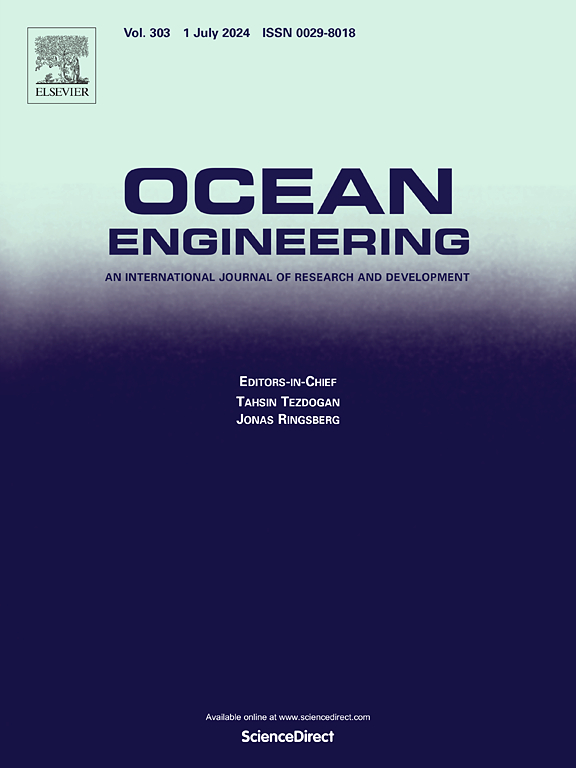Research on passive adaptive wall-climbing cleaning and inspection robot of marine cylindrical steel structure based on conical magnetic adsorption wheel
IF 4.6
2区 工程技术
Q1 ENGINEERING, CIVIL
引用次数: 0
Abstract
The marine growth cleaning and structural defect detection of steel structures of offshore underwater facilities are essential parts of the inspection and maintenance of offshore platforms. However, a majority part of underwater structures of offshore facilities, such as offshore wind turbines, Jacket platforms, Jack-up platforms, etc., are cylindrical structures. Compared with the planar structures, cylindrical structures have large curvature, and less supporting area, and therefore put forward higher requirements for the performance of the attached surface working robot. This paper proposes a wall-climbing cleaning robot that can move freely on the wall of cylindrical steel structures and passively adapt to cylindrical structures with various curvatures and diameters. According to the structural characteristics of the robot, a static failure model is established to analyze the different instability forms of the robot and the minimum critical magnetic adsorption force is determined. To ensure the minimum mass and the maximum magnetic adsorption force of the conical magnetic adsorption wheelsets, the effects of air gap and cone angle on the performance of the conical magnetic adsorption wheelsets were analyzed parametrically, and the optimal structural size was obtained. Finally, the mobility and capability of the robot on the surface of the different diameter cylindrical structures has been validated through prototype experiments.
基于锥形磁吸附轮的船用圆柱形钢结构被动自适应爬壁清洁检测机器人研究
海上水下设施钢结构的海洋生长清洁和结构缺陷检测是海上平台检测和维护的重要组成部分。然而,海上风力涡轮机、杰克特平台、自升式平台等海上设施的大部分水下结构都是圆柱形结构。与平面结构相比,圆柱形结构曲率大、支撑面积小,因此对附着水面工作机器人的性能提出了更高的要求。本文提出了一种爬壁清洁机器人,它可以在圆柱形钢结构的壁面上自由移动,被动适应各种曲率和直径的圆柱形结构。根据机器人的结构特点,建立了静态失效模型,分析了机器人的不同失稳形式,并确定了最小临界磁吸附力。为保证锥形磁吸附轮组的最小质量和最大磁吸附力,对气隙和锥角对锥形磁吸附轮组性能的影响进行了参数分析,得到了最佳结构尺寸。最后,通过原型实验验证了机器人在不同直径圆柱形结构表面上的移动性和能力。
本文章由计算机程序翻译,如有差异,请以英文原文为准。
求助全文
约1分钟内获得全文
求助全文
来源期刊

Ocean Engineering
工程技术-工程:大洋
CiteScore
7.30
自引率
34.00%
发文量
2379
审稿时长
8.1 months
期刊介绍:
Ocean Engineering provides a medium for the publication of original research and development work in the field of ocean engineering. Ocean Engineering seeks papers in the following topics.
 求助内容:
求助内容: 应助结果提醒方式:
应助结果提醒方式:


